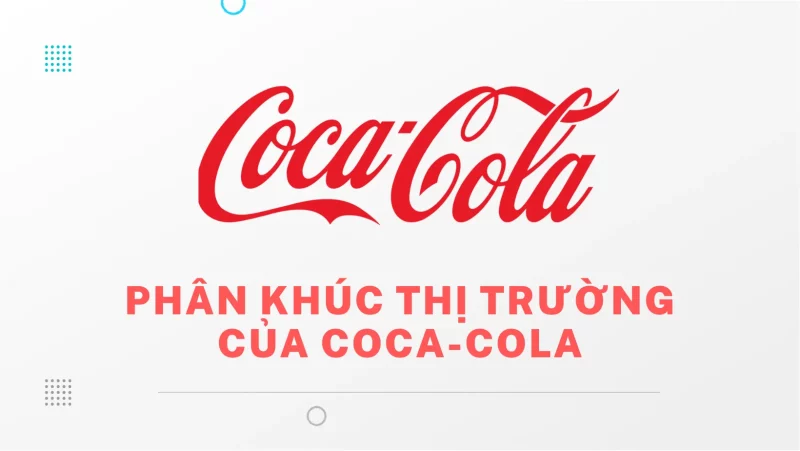
When determining effective market segmentation, businesses can better understand each target customer by capturing their main characteristics, needs as well as behavior and psychology, thereby building Build appropriate strategies to attract customers and optimize conversions.
Currently, to be able to deploy effective marketing campaigns as well as sales activities, understanding customers and capturing outstanding characteristics as well as customer psychology and behavior will help businesses build Build appropriate strategies to increase conversion rates and business profits.
To understand customers, businesses need to determine the market segment they are targeting. With a specific market segment, businesses will know who their customers are, what they want and need, from which they can deploy effective marketing and sales activities to meet customer needs. .
Let’s learn more about market segmentation with Malu in the article below.
What is market segmentation?
Market segmentation, in English, Market Segmentation, is the activity of dividing customers in a target market into different subgroups. These customer groups will have similar characteristics, needs and responses.

Dividing different customer groups can be based on specific customer characteristics such as age, income, personality traits or behavior. These segments can then be used to optimize products and advertising for different customer segments.
Businesses can better understand each target customer by capturing their main characteristics, needs as well as behavior and psychology from which to build marketing strategies as well as marketing strategies . Sales appropriate to each market segment.
Benefits of identifying market segments for businesses
In general, identifying market segments can bring businesses a number of outstanding benefits as follows.
Market segmentation helps businesses build effective marketing strategies
When determining the appropriate market segment, businesses can understand their customers better, grasp their behavior, psychology as well as purchasing trends along their customer journey so that they can Build effective marketing strategies, successfully attract customers and increase conversion rates.
Identifying different types of market segments will also help marketing strategies work more effectively. When a business knows who it wants to target, it will be able to easily deploy the best solutions and methods to reach them.
Market segmentation helps businesses gain a competitive advantage
When determining market segments, businesses can convey messages and content of marketing campaigns in a way that best suits customer needs, thereby helping businesses attract customers more effectively and efficiently. Convince them to choose to invest and pay for the products/services that the business provides instead of the products/services of competitors.
Businesses can differentiate their brand by focusing on the specific needs and characteristics of customers in each specific market segment.
Market segmentation helps businesses build good relationships with customers
Understanding customers by identifying market segments will help businesses produce and develop better quality products that suit customer needs as well as provide effective solutions to help customers. products solve their problems.
Besides, when a business knows what its customers want and need, it can distribute and communicate unique services as its USP and resonate with them. This different value and message helps the connection between the brand and customers become longer and stronger.
Necessary criteria for each market segment
When determining market segments, what criteria should businesses pay attention to? Each market segment needs to have the following criteria:
- Feasibility : With the feasibility factor, businesses need to possess enough resources (human resources, finance, equipment and technology) to serve the identified target customers.
- Measurable : Businesses need to be able to measure factors such as customer purchasing power, segment size and product revenue as well as market segment profitability.
- Profitable : The market segments that the business identifies need to be large enough, have a large number of customers with certain needs and generate enough profit for the business to continue operating.
- Differentiation : The market segment for young people will be different from that for middle-aged people. This means that each market segment of the business must be different and serve different audiences.

The most popular types of market segmentation today
There are currently 4 most popular types of market segments today:
Market segmentation by geography
Geographic market segmentation is when businesses create different target customer groups based on geographical boundaries.
Because potential customers have different needs and preferences based on where they live, understanding the climate and geography of customer groups can help businesses determine which locations to reach out to. Which geographical areas are included in advertising campaigns as well as where to expand your business in the future?
Examples of geographic target market segmentation include:
- ZIP code
- Province, city
- Nation
- Radius around a certain location
- Climate
- Urban or rural
When defining a geographic Market Segmentation, a business may refer to a defined geographic boundary (such as a city or ZIP code) or an area type (such as the size of a city or climate type).
Market segmentation by demographics
Demographics is the analysis of a business’s customer persona in its target market based on demographic characteristics. These characteristics provide basic information about the target customer and are often considered one of the broad types of target market segmentation.
Examples of customer information to segment target markets by demographics are as follows:
- Job
- Marital status
- Education
- Nation
- Religion
- Monthly or yearly income
For businesses following the B2B business model , demographic factors that businesses can analyze include:
- Company size
- Career
- Job function
Market segmentation according to customer psychology
Psychographic segmentation factors are somewhat more difficult to determine than demographics because psychographic factors are subjective. Market segmentation based on customer psychology does not focus much on data and requires businesses to research to explore and learn.
Examples of customer psychological characteristics include:
- Personality traits
- Value
- Attitude
- Interest
- Style of life
- Psychological influencing factors
- Subconscious and conscious
- Motivation
- Prioritize
Market segmentation according to customer behavior
Classifying target markets by behavior requires businesses to understand customer behaviors. These behaviors can be related to how customers and businesses interact with each other.
Examples of customer behavioral characteristics include:
- Purchasing habits
- Spending habits
- Customer mood
- Interact with businesses
An example of a B2C business within this target market classification would be a luxury car brand that targets customers who have purchased a high-end vehicle in the past three years. Besides, B2B businesses can focus on potential customers who have registered for one of the free events on their website.
In general, we can summarize 4 ways to define market segments in the table below:
| Market segmentation by geography | Market segmentation by demographics | Market segmentation according to customer psychology | Market segmentation according to customer behavior | |
| Define | Geographic segmentation is when businesses create different target customer groups based on geographical boundaries. | Demographic segmentation is the analysis of a business’s customer persona in a target market based on demographic characteristics. | Psychological segmentation is when a business classifies its target customers according to factors related to their personality and psychological characteristics. | Behavioral segmentation is the classification of customers based on their actions. |
| For example | Postal code, province, city, country, climate,… | Age, gender, education level, income,… | Personality traits, lifestyle, attitude, motivation,… | Purchasing habits, spending habits, customer mood, interactions with businesses |
| Target | Determine which geographic areas to reach in advertising campaigns as well as where to expand your business in the future. | Go deeper into analyzing basic information of target customers. Or use this basic information to exploit potential consumers that the business has not yet reached. | Understand customers’ thoughts, thereby devising appropriate marketing and sales strategies. | Identify customers’ buying habits and spending habits when shopping. |
2 strategies to identify effective market segments
When determining Market Segmentation, businesses can use the following two strategies.
Strategic focus
Concentration strategy is when a business has determined that it only focuses its resources and costs on a single segment.
This strategy is especially suitable for small, growing businesses that have proven success by focusing their operations in a specific segment. Focusing on one segment will allow businesses to invest more time, energy and resources into a specific customer audience, helping businesses minimize costs for Online Marketing activities and potentially reduce costs . Minimize waste of resources across many segments.
Multi-segment strategy
Unlike a strategy that focuses on one market segment, businesses applying a multi-segment strategy will operate in many different segments.
A multi-segment strategy is a safer strategy, from the standpoint that if a business advertises on multiple channels, they are bound to reach a larger number of customers, thereby increasing their conversion rates. conversions and sales revenue.
However, the downside to a multi-segment strategy is that marketing campaigns and activities are less targeted and can therefore result in a lower average ROI than a single-segment strategy. segment.
5 steps to identify effective market segmentation
Once you have learned general information about market segmentation, how can businesses determine effective market segmentation?
Businesses can apply the 5-step process to identify market segments as follows.
Step 1: Understand your business’s current customers
Businesses can begin the process of identifying market segments by performing an analysis of their current customer base. Analyzing your current customer base will allow you to better understand the customers you currently have and begin to identify trends that exist within your current customer base.
To understand more about your current customers, businesses can use the following methods.
- Interview customers
Businesses can contact and invite some customers who regularly use their products/services to an interview to learn more about their main characteristics as well as their common needs and desires. current customer group.

- Interview sales staff
If your business has a team of sales staff who have worked with many customers, use them as a reliable source of information. Interview them to find commonalities or trends they often see when working with customers.
- Using data on the website
A business’s website also has data that can help learn about its current customers. Use Google Analytics to find out detailed information about customers. For example, businesses can learn about customer behavior by looking at which pages users visit, how long they stay on those pages, and where most customers are located.
Step 2: Draw a portrait of your target customer
After having a better understanding of current customers, it’s time for businesses to learn about potential customers by drawing portraits of their target customers.
A buyer persona is a profile of an ideal customer that includes information such as demographics, interests, behavioral characteristics and factors that determine the subject’s purchase.
Businesses can draw customer portraits in 3 steps:
Step 1: Collect information about customers
Step 2: Data processing
Step 3: Draw a portrait of target customers based on collected and processed data
Read more about how to draw customer portraits : What is a customer portrait & 3 steps to draw a target customer portrait
Step 3: Market research
Once you understand your customers, the next step in the process of identifying market segments is market research.
Market research or Market Research is a process of collecting, processing, and analyzing information related to customers, competitors, and target markets with the purpose of helping businesses deploy marketing strategies. more suitable to improve customer experience and increase conversion rates.
There are two main market research methods that businesses can apply.
- Primary market research: This is a market research method through which businesses will approach customers themselves or hire another third party to collect information about customers or collect feedback, Customer reviews about the business’s products/services.
- Secondary market research : For this market research method, businesses will collect information from available sources. These sources may come from government organizations, chambers of commerce, trade associations, and other organizations.
Read more about effective market research in the article : What is market research & 6 steps to effective market research

Step 4: Determine the appropriate market segment
In this step, businesses need to determine the market segment that is suitable for the target customers and the products/services that the business provides.
To identify market segments, businesses can answer the following questions:
- Who are the customers that the business wants to target?
- What are their main needs or problems?
- Do the products/services the business provides match the needs of customers?
- What customer characteristics or qualities are most popular?
- Which segments is the business qualified to serve?
- Which segments can businesses have a competitive advantage?
Step 5: Analyze and evaluate the effectiveness of the selected market segment
Once your business finds a new segment that you want to explore, don’t rush into creating a few campaigns to test and evaluate the effectiveness of that market segment.
After a certain period of time, businesses should analyze and evaluate the effectiveness of the market segment they choose. Does that segment bring stable revenue and business profits to the business?
Some examples of market segmentation
To better understand Market Segmentation, below are some examples of market segments of famous brands.
Vinamilk’s market segmentation
Vinamilk is one of Vietnam’s leading enterprises in the field of trading and manufacturing dairy products.

With a diverse number of products, Vinamilk’s market segments are determined based on the following 3 ways.
- Market segmentation by geography : Based on population density and product consumption ability, Vinamilk has identified its two main market segments: urban and rural. In particular, Vinamilk focuses mainly on the customer segment living in big cities.
- Market segmentation by demographics : Vinamilk relies on age to divide into different market segments: children, adults and the elderly.
- Market segmentation according to customer buying behavior : Based on the health status of customers, Vinamilk has segmented the market according to the buying behavior of normal, malnourished and obese customers. diabetes.
Market segmentation of Coca Cola

Cocacola is the world’s largest soft drink producer. When deciding to enter the Vietnamese market, this brand determined the market segment based on two main ways as follows.
- Market segmentation by geography : When Coca Cola entered the Vietnamese market, it tried to distribute products with a dense network from urban to rural areas, from plains to mountainous areas, from South to North. However, this brand still focuses on big cities where the population is concentrated.
- Market segmentation by demographics: Coca Cola focuses mainly on the young customer segment – those with high product demand.
Biti’s market segment
Biti’s is a famous footwear manufacturing enterprise in Vietnam. Biti’s always focuses on improving product quality, rich designs, affordable prices, especially the production structure shifting to new products such as: Western shoes, suitable diverse fashion footwear. with market needs and trends.

This brand has defined its market segment in 2 main ways:
- Market segmentation by demographics : Biti’s products can serve customers of different ages and different professions. From workers with average salaries to the upper class in society, from the elderly to children. Every customer becomes the target market of the business
- Market segmentation according to customer behavior : Biti’s products focus on serving customers with individual needs. These customers focus on the color and style that the product brings. The shoes chosen must match the customer’s personality and highlight their style.
Summary
When determining effective segmentation, businesses can better understand each target customer by capturing their main characteristics, needs as well as behavior and psychology, thereby building Appropriate strategies to attract customers and optimize conversions. Happy siblings success.




